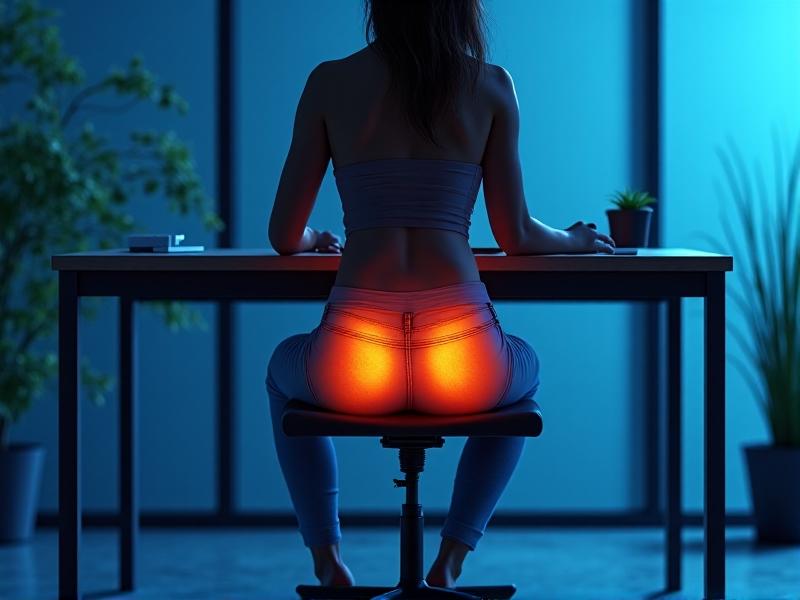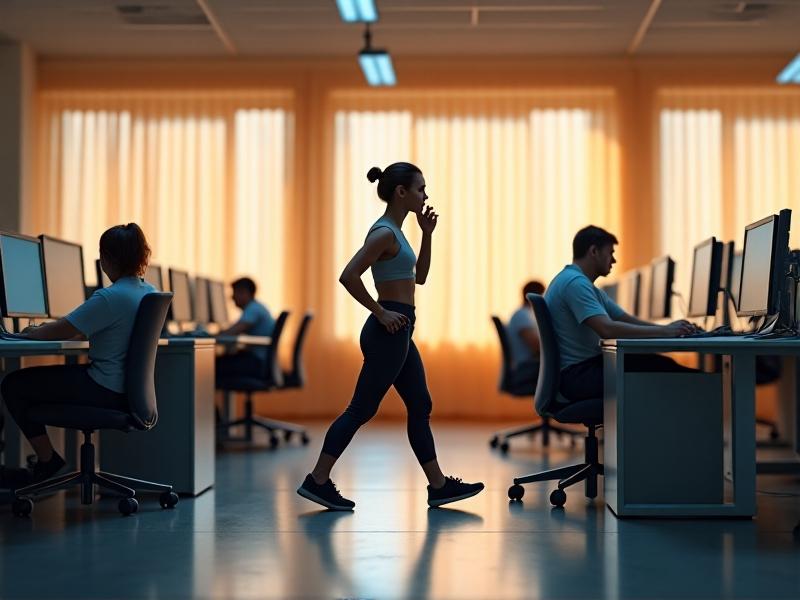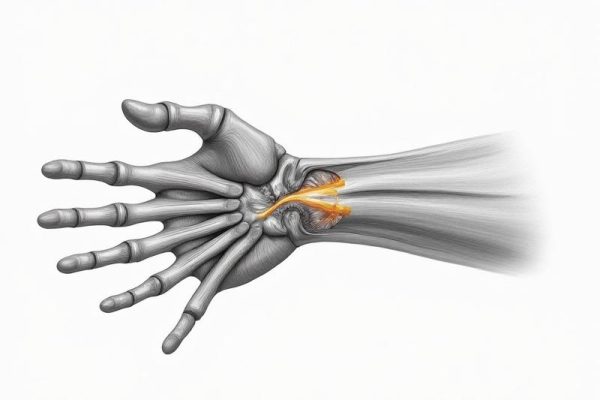```html
The Hidden Epidemic: How Sitting Silences Your Glutes

Modern lifestyles have turned sitting into a default posture, with the average office worker spending 8–10 hours daily in chairs. This chronic inactivity doesn’t just lead to stiffness—it creates “gluteal amnesia,” where the brain-muscle connection to our largest power-generating muscles weakens. The glutes, designed for explosive movement and stability, become neurologically dormant. Over time, adjacent muscles like hip flexors and lower back muscles overcompensate, creating imbalances that manifest as poor posture, reduced athletic performance, and even chronic pain.
The Neuroscience of Glute Activation: Rewiring Muscle Memory

Muscle activation begins in the motor cortex, where electrical signals travel through the spinal cord to muscle fibers. Prolonged disuse diminishes this communication pathway—akin to a phone signal weakening with distance. Studies using electromyography show that sedentary individuals exhibit 40% less glute engagement during basic movements compared to active counterparts. Retraining this connection requires focused proprioceptive work, combining visualization techniques with targeted exercises to rebuild neural efficiency.
Daily Micro-Habits to Counteract Sedentary Damage

Combatting glute dormancy doesn’t require hours at the gym. Set hourly alarms to perform 60-second “movement snacks”: march in place with high knees, squeeze glutes while standing, or practice standing leg abductions. Modify your workspace with a standing desk converter or balance cushion to encourage micro-adjustments. Even subtle shifts like sitting on the edge of your chair or crossing legs alternately can stimulate blood flow to atrophied areas.
Foundational Movements: Building Mind-Muscle Connection

Begin with low-load, high-awareness exercises. Isometric holds like wall sits with a focus on glute squeeze or bird dogs train recruitment patterns without overwhelming the system. Tempo-focused bodyweight squats (3 seconds down, 1-second pause at depth) enhance control. Use tactile feedback: press your hands against your glutes during bridges to “feel” the activation, reinforcing the brain-body connection.
Resistance Training Strategies for Dormant Glutes
Once foundational activation is established, introduce external resistance. Banded lateral walks and cable kickbacks target often-neglected gluteus medius fibers. Eccentric-focused Romanian deadlifts (lowering weights slowly) build strength while minimizing compensatory patterns. For advanced lifters, single-leg weighted hip thrusts with a pause at the top maximize time under tension for stubborn glutes.
Mobility Work: Freeing Hips for Better Engagement
Tight hip flexors and stiff thoracic spines often block glute activation. Incorporate dynamic stretches like the 90/90 hip switch drill and thread-the-needle rotations. Use foam rollers on the TFL (tensor fasciae latae) and lacrosse balls on piriformis trigger points. Improved hip internal/external rotation range allows the glutes to fire without mechanical restrictions.
Postural Alignment: Creating Space for Glute Function
An anterior pelvic tilt—common in desk workers—places glutes in a lengthened, weakened position. Practice “pelvic clock” exercises: lying on your back, gently tilt the pelvis through imaginary clock positions. Strengthen transverse abdominis with vacuum breaths to stabilize the core, allowing glutes to engage without lower back takeover. Foot positioning matters too—experiment with wider stances during squats to accommodate individual hip structures.
Activation Protocols for Different Body Types
Taller individuals may need to adjust squat depth to maintain spinal neutrality. Those with wider pelvises benefit from sumo-style deadlifts. Postpartum women should prioritize pelvic floor co-activation with glute work. Bodyweight-only variations ensure accessibility, while tempo manipulation (slowing movements) increases intensity for advanced trainees without heavy weights.
Nutrition and Recovery: Supporting Muscle Reawakening
Muscle protein synthesis requires adequate leucine intake—aim for 3g per meal from eggs, Greek yogurt, or plant-based proteins. Tart cherry juice and magnesium-rich foods aid sleep quality for recovery. Hydration matters—even 2% dehydration reduces muscle endurance. Post-workout, combine fast-digesting carbs with protein to replenish glycogen stores stressed during activation training.
Sustaining Glute Engagement: Lifestyle Integration
Make glute engagement reflexive—squeeze when rising from chairs, during grocery carries, or climbing stairs. Choose active commuting options like biking or walk-and-talk meetings. For travelers, pack resistance bands and practice suitcase deadlifts. Consistency trumps intensity: six 5-minute daily activation sessions yield better long-term results than sporadic hour-long workouts.




